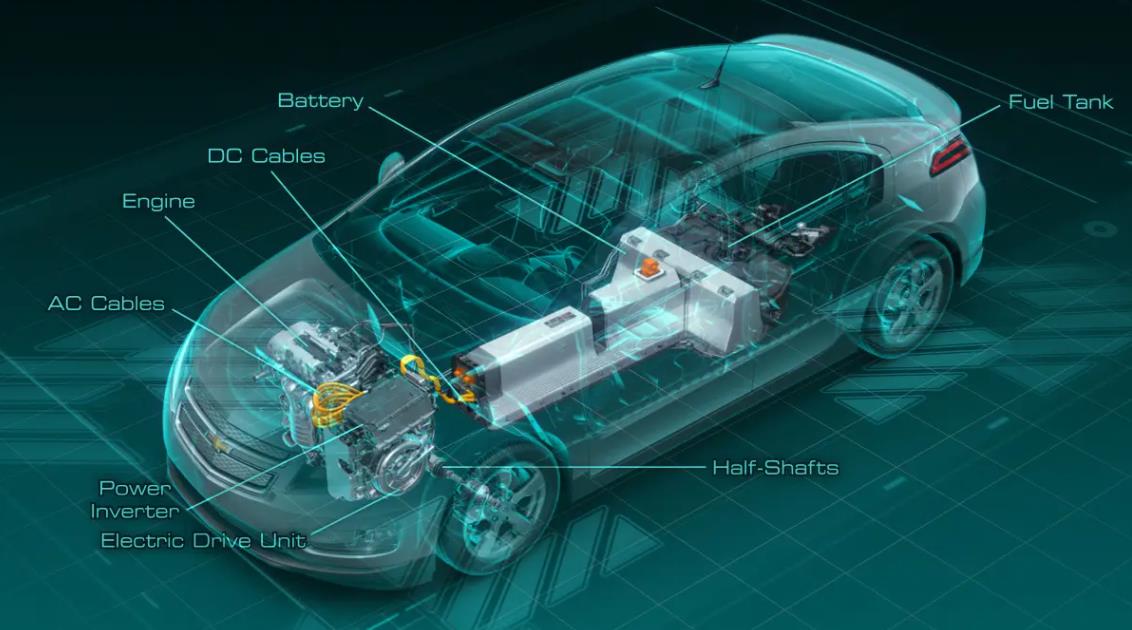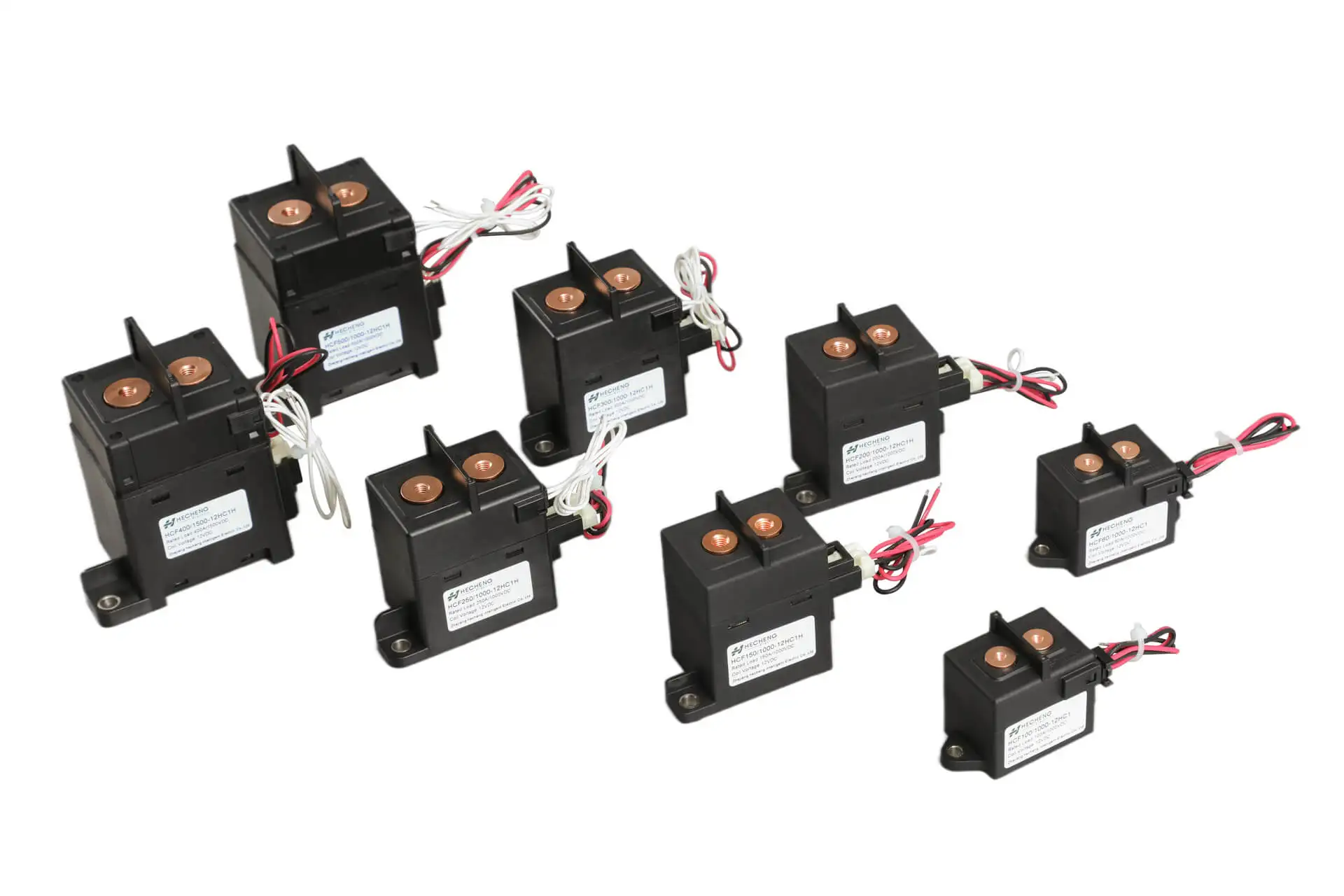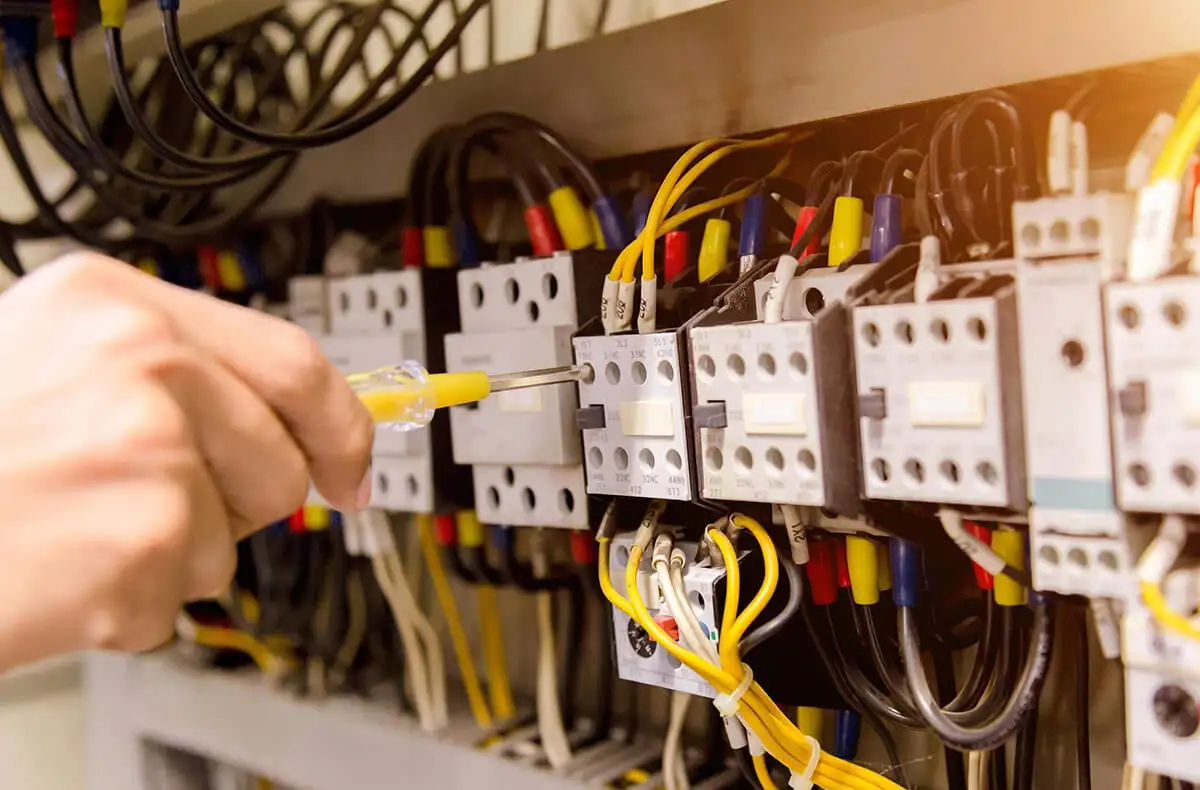In today’s modern power systems and motorization, DC contactors play an important role as a key electromagnetic switching device. Whether in electric transportation, solar and wind energy systems, or industrial automation and power systems, DC contactors play an indispensable function. Therefore, understanding the selection and considerations of DC contactors is crucial for new energy companies.
What is a DC contactor?
A DC contactor is an electromagnetic switching device capable of physically switching and used to carry, turn on and break DC loads. It is usually of hermetically sealed construction and equipped with an arc extinguishing device, and is characterized by miniaturization.
They play an important role in many fields and applications, including but not limited to the following:
- Electric transportation : DC contactors are widely used in electric vehicles such as electric cars, electric bicycles and electric motorcycles. They are used to control the start-stop, speed regulation and reverse operation of electric motors to realize the power control of vehicles.
- Solar and wind energy systems : DC contactors play an important role in solar and wind energy systems. They are used to control and protect the circuits of solar panels and wind turbines for the collection, conversion and storage of electrical energy.
- Industrial Automation : DC contactors are widely used in industrial automation. They are used to control, protect and isolate DC circuits for automated control of various equipment and machines, such as machining equipment, conveyor lines and automated production lines.
- Power Systems : DC contactors are used in power systems to control and protect DC circuits. They play an important role in DC transmission systems, DC distribution systems and DC power equipment, such as circuit breakers for DC transmission lines and control equipment for DC substations.
- Battery Management System: DC contactors play a key role in the battery management system. They are used to control the connection and disconnection of the battery pack, to realize the charging and discharging management and protection of the battery, and to ensure the safe operation of the battery pack.
DC contactor selection process
The DC contactor selection process can be followed in the following steps:
- Determining Electrical Parameters: First, determine the required electrical parameters, including rated voltage, rated current, and on/off capability. These parameters will be determined based on the DC circuit being controlled and the load requirements.
- Consider environmental conditions: Consider the operating environmental conditions, including temperature, humidity, vibration, and other factors. Ensure that the selected DC contactor can adapt to these environmental conditions and provide reliable performance.
- Understanding Load Characteristics: Understand the characteristics of the load being controlled, including starting current, operating current, overload current, etc. This helps determine the DC contactor’s turn-on/turn-off capability and current rating range.
- Life and Reliability Requirements: Determine the life and reliability requirements for the DC contactor based on the requirements of the application. Consider the mechanical life, electrical life, and durability of the contactor.
- Selecting the Appropriate Contactor Type: Select the appropriate type of DC contactor for your application. Common DC contactor types include electromagnetic contactors and solid-state contactors. Select the most appropriate type according to the characteristics and requirements of the application.
- Researching suppliers and products: Conduct market research to study DC contactor products offered by different suppliers. Consider the supplier’s reputation, product quality, technical support and other factors.
- Performance Testing and Verification: In selected DC contactors, performance testing and verification is performed. This can be accomplished through laboratory testing or by reference to other users’ real-world application experience.
- Select the best solution: Based on a combination of the above steps, select the best DC contactor solution. Consider compatibility with other system components, cost effectiveness, and future maintenance and replacement needs.
DC Contactor Selection Considerations
When selecting a DC contactor, the following factors need to be considered to ensure the suitability and reliability of the selection:
- Operating Voltage: Ensure that the rated operating voltage of the DC contactor meets the voltage requirements of the system.
- Operating current: Select a DC contactor with sufficient carrying capacity according to the current load demand of the system.
- Short-circuit current: Determine the expected short-circuit current of the system and select a DC contactor capable of withstanding this current.
- Pre-charging control: Considering the system’s pre-charging resistance, pre-charging time and pre-charging current, choose a suitable DC contactor to realize a stable pre-charging process.
- Turn-on life: Determine the required turn-on life based on the voltage difference and current during turn-on, and select a DC contactor with the appropriate life.
- Cut-off life: Considering the abnormal conditions of the system and the need for cut-off with load, select a DC contactor with suitable cut-off life.
- Mechanical environment: According to the installation location and application environment of the DC contactor, select a contactor that can adapt to mechanical vibration and shock.
- Temperature environment: Consider the temperature environment in which the DC contactor is located and select a contactor that can operate properly in that environment.
- Coil Control: Consider factors such as the rated voltage of the coil drive power supply, the stability of the power supply, and the power supplied to match the coil control requirements of the DC contactor.
Selection Considerations for Different Categories of Contactors for Electric Vehicles
In the field of electric vehicles, DC contactors can be subdivided into four main categories: main contactors, charging contactors, pre-charging contactors, and auxiliary contactors, and the following will describe the matters to be considered when selecting according to each category.
Main Contactor:
- Working voltage: the system voltage should be less than or equal to the maximum working voltage of the contactor
- Operating current: the contactor current carrying capacity should be matched according to the system current conditions (continuous current, duration, etc.), and at the same time, a certain derating factor should be retained according to the uncertainty of the system current index and the variability of the contactor carrying current test, etc., which is generally taken as (1.2 ~ 1.4)
- Short-circuit current: the expected short-circuit current of the system should first be confirmed based on the system power supply, circuit resistance, etc., and then according to the actual melting current and actual melting time after the fuse is energized into the expected short-circuit current, matching the short-circuit tolerance of the contactor.
- Pre-charging control: in general, it is recommended to control the voltage difference between the two ends of the contactor after pre-charging within 20V (the smaller the better).
- Turn-on life: The turn-on life requirement should be determined based on the voltage difference and closing current when the contactor closes after precharging is completed, matching the contactor.
- Cutting off life: the system will not normally cut off the load, mainly considering the system abnormalities and the probability of abnormality. General forward load cut off the probability of abnormality is slightly higher; reverse need to consider the system in the energy feedback or brake reverse charging at the same time meet the low-voltage power-down situation, the probability of abnormality is slightly lower. It is recommended to determine the demand for load cutoff according to the load condition and the probability of abnormality, and match the contactor.
- Mechanical environment: The contactor should be matched to the system’s mechanical environment requirements, taking into account the location of the contactor in the vehicle.
- Temperature environment: the contactor should be matched to the system temperature environment requirements
- Coil control: The rated supply voltage of the coil drive power supply, voltage fluctuation range, instantaneous power supply of the power supply, inrush time and continuous power supply of the power supply should be considered to match the contactor.
Charging Contactor
- Working voltage: The working voltage should be less than or equal to the maximum working voltage of the contactor.
- Operating current: the contactor current carrying capacity should be matched according to the operating current conditions (continuous current, duration, etc.), and at the same time, a certain derating factor should be retained according to the uncertainty of the system current index and the variability of the contactor carrying current test, etc., which is generally taken as (1.2~1.4).
- Cut off life: charging contactor in normal use no-load on and off, abnormal fault conditions can be considered contactor cut off the load, it is recommended that according to the conditions of the system voltage and charging current as well as the probability of anomalies matching contactor
- Mechanical environment: The contactor should be matched to the system’s mechanical environment requirements, taking into account the location of the contactor in the vehicle.
- Temperature environment: the contactor should be matched to the system temperature environment requirements
- Coil control: The rated supply voltage of the coil drive power supply, voltage fluctuation range, instantaneous power supply of the power supply, inrush time and continuous power supply of the power supply should be considered to match the contactor.
Pre-Charge Contactor
- Working voltage: The working voltage should be less than or equal to the maximum working voltage of the contactor.
- Working current: The size of the pre-charge current should be calculated according to the working voltage, pre-charge resistance, pre-charge time, capacitance (capacitance, voltage ), and the contactor should be matched according to the pre-charge current.
- Turn-on life: should be based on the operating voltage and pre-charge current, service life to determine the contactor turn-on load conditions and turn-on life requirements, matching the contactor; pre-charged contactor is not normally cut off with load.
- Cutting off life: Considering the system power down during the pre-charging process, the pre-charging contactor exists with load cutting off, you can determine the demand for load cutting off according to the load conditions and the probability of abnormality, and match the pre-charging contactor.
- Mechanical environment: according to the contactor applied in the automobile working conditions, the system mechanical environment should be considered to match the needs of the contactor.
- Temperature environment: the contactor should be matched to the system temperature environment requirements
- Coil control: The rated supply voltage of the coil drive power supply, voltage fluctuation range, instantaneous power supply of the power supply, inrush time and continuous power supply of the power supply should be considered to match the contactor.
Auxiliary contactor
- Working voltage: The working voltage should be less than or equal to the maximum working voltage of the contactor.
- Operating current: generally should be selected according to the current of the demand load life
- Load Life:
- Air Conditioning: Air conditioning loads are biased toward the motor type, and pre-charging is recommended before contactor closure. The contactor can be matched according to the voltage difference and closing current when the contactor is closed after the pre-charging is completed to determine the requirement of turn-on life.
Air conditioning contactors generally have drive circuit protection, normal non-existent load cut-off conditions, you can consider the choice of a small number of rated load cut-off capacity of the contactor as a protective use. - PTC: PTC load is resistive, the heating relay needs to be on-load off, should be based on the actual load of PTC heater, service life to determine the on-load off life requirements, matching contactor.
- Electric defrost: electric defrost load is resistive, resistance with the temperature changes significantly, should be based on the resistance characteristics to determine the on-load conditions and cut off the load conditions and service life, matching the contactor.
- DC-DC: Loads are capacitive and pre-charging is recommended before contactor closure. According to the voltage difference and closing current when the contactor is closed after the pre-charging is completed, determine the on-time life requirement and match the contactor.
DC/DC contactors are generally required to be cut off with small loads, and the contactors should be matched to the actual load conditions and service life.
- Air Conditioning: Air conditioning loads are biased toward the motor type, and pre-charging is recommended before contactor closure. The contactor can be matched according to the voltage difference and closing current when the contactor is closed after the pre-charging is completed to determine the requirement of turn-on life.
- Mechanical environment: The contactor should be matched to the system’s mechanical environment requirements, taking into account the location of the contactor in the vehicle.
- Temperature environment: the contactor should be matched to the system temperature environment requirements
- Coil control: The rated supply voltage of the coil drive power supply, voltage fluctuation range, instantaneous power supply of the power supply, inrush time and continuous power supply of the power supply should be considered to match the contactor.
In summary, DC contactor selection and considerations are key factors in ensuring proper system operation and reliability. By clarifying electrical parameters, understanding load characteristics, considering environmental conditions, and researching suppliers and products, we can select the DC contactor that best suits the needs of the application.
As a new energy company, we need to consider the requirements of the power system thoroughly and make informed decisions based on the actual situation. Only through a careful selection process can we ensure the reliability, performance and safety of our DC contactors and contribute to the development of the power system and the electrification sector.





